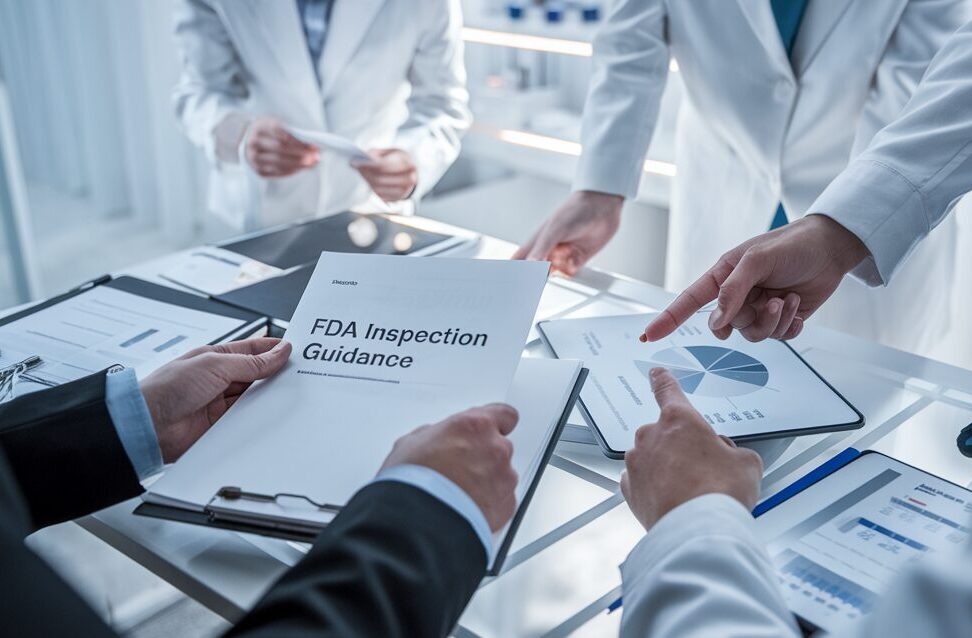FDA BIMO Guidance and Inspection Process: Streamlining Clinical Trial Submissions for NDAs and BLAs
December 22, 2024 GsapFDA BIMO Guidance and Inspection Process: Streamlining Clinical Trial Submissions for NDAs and BLAs
December 22, 2024
Gsap
Bringing a new drug or biologic to U.S market is a complex journey that requires strict compliance with the FDA's regulations. One key aspect of this process is the Bioresearch Monitoring (BIMO) program, which assures the quality and integrity of clinical trial data.
In December 2024, the FDA released new guidance, Standardized Format for Electronic Submission of NDA and BLA Content for the Planning of BIMO Inspections. This guidance aims to streamline submissions for New Drug Applications (NDAs) and Biologics License Applications (BLAs).
This article provides an overview of the guidance, its goals, and how it impacts companies preparing submissions. Whether you're new to regulatory processes or an experienced professional, this guide will clarify what you need to know and do.
What is the FDA BIMO Guidance and Inspection Process?
The Bioresearch Monitoring (BIMO) program is a comprehensive FDA initiative designed to assure that clinical trials are conducted ethically and that their data is trustworthy. Here’s what it entails:
- Data Integrity: The program verifies that clinical trial data submitted to the FDA is reliable and accurately reflects study results.
- Ethical Compliance Assurance: It ensures that trials comply with Good Clinical Practices (GCP) and that participants' rights and safety are prioritized. This sustained process helps maintain trust in trial conduct.
- BIMO Inspections: The FDA conducts on-site inspections, data audits, and remote regulatory assessments of clinical trial sites, sponsors, contract research organizations (CROs), and institutional review boards (IRBs) involved in the studies. These inspections often follow a risk-based approach to target areas of concern.
BIMO findings provide valuable information to the FDA regarding the integrity and reliability of the clinical data submitted in NDAs and BLAs. This ensures that the data is adequate to support the approval of new treatments. Without this comprehensive program, patient safety and public trust in the drug approval process could be at risk.
The New Guidance for BIMO Inspections: Aim and Main Changes
Aim of the FDA BIMO Guidance
The new guidance aims to standardize and simplify data submission required for planning BIMO inspections. This standardization facilitates the FDA's ability to identify sites for inspection, evaluate study integrity, and maintain an efficient review timeline.
Standard Data to Submit as Part of NDAs and BLAs
Study-specific data (both clinical study-level information and clinical site data) should be submitted at several levels:
Clinical Study-Level Information: Sponsors must provide comprehensive tables listing all clinical sites, including:
a. Investigator names, and complete site details
b. Details of CROs/vendors or other entities to whom the Sponsor delegated activities.
c. Protocol (and amendments) and Annotated CRF
Subject-Level Data Line Listings: Detailed, site-specific data for each trial participant must be provided, including studies with different treatment indications. Primary data points (in addition to derived data) must be submitted. For example, in a pain trial, raw diary entries of participants’ pain scores (primary data) must be submitted alongside calculated results (derived data).
Summary-Level Clinical Site Dataset: This dataset summarizes key information from clinical sites across all pivotal studies. It allows the FDA to effectively prioritize sites for inspection.

All submissions must adhere to the FDA’s electronic common technical document (eCTD) format and be uploaded through the FDA’s secure gateway.
Key Components of Data Standardization of Submission Content - FDA BIMO Inspection Guidance
What Does This Mean for Your Business?
These changes streamline regulatory submissions and improve the efficiency of FDA reviews. However, they also require more detailed preparation and coordination. Sponsors should consider the following actionable steps:
- Streamlined Submissions: Ensure data formats are standardized to reduce variability and errors. This will enable smoother FDA reviews and minimize back-and-forth requests for clarification.
- Risk-Based Inspections: Be aware that the FDA employs a risk-based model to prioritize site inspections, meaning sites with incomplete or inconsistent data may face closer scrutiny. Proactively address potential gaps in your data.
- Early Integration: Incorporate the guidance’s requirements into clinical trial planning from the outset to avoid delays during submission. Early compliance ensures smoother regulatory processes.
Steps to Stay Ahead
- Prepare for Raw Data Requirements: Configure your EDC system to capture detailed raw data, not just calculated scores. Implement edit checks to verify data accuracy and plan for source data verification (SDV) for critical measurements.
- Enhance Risk Management: Assess how these requirements may impact your risk management processes and address vulnerabilities early.
- Foster Targeted Collaboration: Align regulatory, clinical, and data management teams to address the specific demands of the new requirements. Early coordination is key to streamlining processes and avoiding delays.
- Enhance Team Readiness: Sensitize stakeholders, including investigators, CROs, and vendors, about the requirements and their role in providing data to the FDA. Enhanced scrutiny may increase the likelihood of regulatory inspections.
Conclusion
The FDA’s updated BIMO guidance and inspection processes reflect its efforts to prioritize efficiency in regulatory processes while enabling enhanced scrutiny of sponsors, investigators, and CROs. By adopting the standardized format for data submission, companies can expedite their review timelines and demonstrate a commitment to transparency and data integrity.




